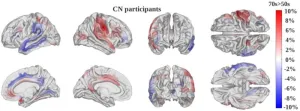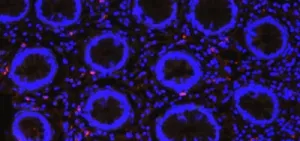Origin and diversity of Hun Empire populations
Far-reaching genetic ties between the Mongolian steppe and Central Europe under Hun rule
2025-02-24
(Press-News.org) The Huns suddenly appeared in Europe in the 370s, establishing one of the most influential although short-lived empires in Europe. Scholars have long debated whether the Huns were descended from the Xiongnu. In fact, the Xiongnu Empire dissolved around 100 CE, leaving a 300-year gap before the Huns appeared in Europe. Can DNA lineages that bridge these three centuries be found?
To address this question, researchers analyzed the DNA of 370 individuals that lived in historical periods spanning around 800 years, from 2nd century BCE to 6th century CE, encompassing sites in the Mongolian steppe, Central Asia, and the Carpathian Basin of Central Europe. In particular, they examined 35 newly sequenced genomes ranging from: a 3rd-4th century site in Kazakhstan and 5th-6th century contexts in the Carpathian Basin, including exceptional Hun-period burials that exhibit Eastern or “steppe” traits often linked to nomadic traditions (i.e. “eastern-type” burials).
The study was carried out as part of the ERC Synergy Grant project HistoGenes (No. 856453), by a multidisciplinary research team of geneticists, archaeologists and historians, including researchers from the Max Planck Institute for Evolutionary Anthropology in Leipzig, Germany. The results showed that there was not a large Asian- or steppe-descended community living in the Carpathian Basin after the Huns' arrival. However, they identified a small but distinct set of individuals - often belonging to the “eastern-type” burials - who did carry significant East Asian genetic signatures. Advanced comparisons of genealogical connections (the analysis of shared DNA segments known as identical-by-descent, or IBD) led to a remarkable discovery. Co-first author Guido Alberto Gnecchi-Ruscone of the Max Planck Institute for Evolutionary Anthropology adds: “It came as a surprise to discover that few of these Hun-period individuals in Europe share IBD links with some of the highest-ranking imperial elite individuals from the late Xiongnu Empire”. These connections also include an individual from the largest terrace tomb ever discovered in a Xiongnu context.
Connections across the steppe and mixed legacy
This link suggests that some among the Huns in Europe could trace their lineage back to important late Xiongnu burials from the Mongolian steppe. Yet the archaeogenomic picture for most Hun and post-Hun period individuals in the Carpathian Basin is far more varied. Co-first author Zsófia Rácz of the Eötvös Loránd University in Budapest adds: “DNA and archaeological evidence reveal a patchwork of ancestries, pointing to a complex process of mobility and interaction rather than a mass migration.” While these connections confirm the presence of some direct descendants of Xiongnu elites, the study also shows that the population of the Hun empire in Europe was genetically highly heterogeneous. Another key conclusion of the study is that the 5th century “eastern-type” burials from Central Europe are highly diverse in both their cultural and genetic heritage.
The findings also underscore that the Huns’ arrival in Europe contrasts with that of the Avars two centuries later. Co-corresponding author Walter Pohl of the Austrian Academy of Sciences adds: “The Avars came directly to Europe after their East-Asian empire had been destroyed by the Turks, and many of their descendants still carried considerable East Asian ancestry until the end of their rule in c. 800. The ancestors of Attila’s Huns took many generations on their way westward and mixed with populations across Eurasia”.
Implications for European history
This research illuminates how past societies in the Carpathian Basin adapted and changed in response to new arrivals. Co-corresponding author Zuzana Hofmanová of the Max Planck Institute for Evolutionary Anthropology adds: “Although the Huns dramatically reshaped the political landscape, their actual genetic footprint - outside of certain elite burials - remains limited”. Instead, the population as a whole appears to be predominantly of European origin and have continued local traditions, with some newly arrived steppe influences woven in.
Co-corresponding author Johannes Krause, director of the Department of Archaeogenetics at the Max Planck Institute for Evolutionary Anthroplogy, adds: “From a broader perspective, the study underscores how cutting-edge genetic research, in combination with careful exploration of the archaeological and historical context, can resolve centuries-old debates about the composition and origin of past populations”. While many questions remain, this work offers compelling evidence for direct connections between the Hun period population, the steppe and the Xiongnu Empire, deepening our understanding of the dynamic networks that linked East and West Eurasia in the past.
###
This research project has been funded by the European Research Council (ERC) under the European Union's Horizon 2020 research and innovation programme (Grant Agreement No. 856453 ERC-2019-SyG HistoGenes). HistoGenes is a research framework investigating the period of 400 to 900 CE in the Carpathian Basin from an interdisciplinary perspective.
END
[Attachments] See images for this press release:


ELSE PRESS RELEASES FROM THIS DATE:
2025-02-24
A new artificial intelligence model measures how fast a patient’s brain is aging and could be a powerful new tool for understanding, preventing and treating cognitive decline and dementia, according to USC researchers.
The first-of-its-kind tool can non-invasively track the pace of brain changes by analyzing magnetic resonance imaging (MRI) scans. Faster brain aging closely correlates with a higher risk of cognitive impairment, said Andrei Irimia, associate professor of gerontology, biomedical engineering, quantitative ...
2025-02-24
Starting today, people with Parkinson’s disease will have a new treatment option, thanks to U.S. Food and Drug Administration approval of groundbreaking new technology.
The therapy, known as adaptive deep brain stimulation, or aDBS, uses an implanted device that continuously monitors the brain for signs that Parkinson’s symptoms are developing. When it detects specific patterns of brain activity, it delivers precisely calibrated electric pulses to keep symptoms at bay.
The FDA approval covers two treatment algorithms that run on a device made by Medtronic, a medical device company. Both work by monitoring the same part of the brain, called the subthalamic nucleus. ...
2025-02-24
Elephants, giraffes, pythons and other large species have higher cancer rates than smaller ones like mice, bats, and frogs, a new study has shown, overturning a 45-year-old belief about cancer in the animal kingdom.
The research, conducted by researchers from the University of Reading, University College London and The Johns Hopkins University School of Medicine, examined cancer data from 263 species across four major animal groups - amphibians, birds, mammals and reptiles. The findings challenge "Peto's paradox," a longstanding idea based on observations from 1977 that suggested ...
2025-02-24
LA JOLLA, CA—Children who experience multiple cases of dengue virus develop an army of dengue-fighting T cells, according to a new study led by scientists at La Jolla Institute for Immunology (LJI).
The findings, published recently in JCI Insights, suggest that these T cells are key to dengue virus immunity. In fact, most children who experienced two or more dengue infections showed very minor symptoms—or no symptoms at all—when they caught the virus again.
"We saw a significant T cell response in children who had been infected more than once before," says study leader and LJI Assistant Professor Daniela Weiskopf, Ph.D.
Dengue virus infects up ...
2025-02-24
Smart artificial microswimmers—small robots that resemble microorganisms like bacteria or human sperm—could potentially be used for targeted drug delivery, minimally invasive surgery, and even in fertility treatments.
These types of complicated tasks won’t be accomplished by a single microswimmer. Multiple swimmers will be necessary; however, it’s unclear how such groups will move within the chemically and mechanically complex environment of the body’s fluids.
“We know that whenever a swimmer has a neighbor, it swims differently,” says Ebru Demir, an assistant ...
2025-02-24
(Charlottesville, VA, Feb. 24, 2025) –
The Center for Open Science (COS) is pleased to announce the appointment of Daniel Correa, Chief Executive Officer of the Federation of American Scientists, and Amanda Montoya, Associate Professor of Quantitative Psychology at UCLA, to the COS Board of Directors. Both will serve three-year terms from 2025 to 2027, bringing valuable expertise in science policy, innovation, research methodology, and open science advocacy.
Daniel Correa is the Chief Executive Officer of the Federation of American Scientists, ...
2025-02-24
FOR IMMEDIATE RELEASE
Researchers say they found that infection with a common virus that can be transmitted from mother to fetus before birth significantly worsens an often-fatal complication of premature birth called necrotizing enterocolitis (NEC) in experiments with mice.
The research team, led by Johns Hopkins Children’s Center investigators and funded by the National Institutes of Health, says the new findings advance the search for better treatments for NEC — a relatively rare condition, but still the most common emergency intestinal complication in preemies.
A report on the study published Feb. 13 in Cellular and Molecular Gastroenterology ...
2025-02-24
Irvine, Calif., Feb. 24, 2025 — There’s an arms race in medicine – scientists design drugs to treat lethal bacterial infections, but bacteria can evolve defenses to those drugs, sending the researchers back to square one. In the Journal of the American Chemical Society, a University of California, Irvine-led team describes the development of a drug candidate that can stop bacteria before they have a chance to cause harm.
“The issue with antibiotics is this crisis of antibiotic ...
2025-02-24
Ketamine can effectively treat depression, but whether depressed patients with alcohol use disorder can safely use ketamine repeatedly remains unclear clinically. To investigate this possibility, Mohamed Kabbaj and colleagues from Florida State University modeled aspects of human depression in rats using long-term isolation and assessed how isolation and alcohol exposure alter ketamine intake. The authors found that a history of isolation and alcohol use influence the rewarding properties of ketamine in a sex-dependent manner.
Female rats took ketamine more than males in general. Prior alcohol use increased female rat ketamine ...
2025-02-24
Poor food decisions and eating habits can contribute to excessive weight gain and health problems. Nutritional labels meant to convey healthiness instead may create negative expectations about taste or pose as a time-constraining hurdle for shoppers. Doris Schicker and Jessica Freiherr, from the Fraunhofer Institute for Process Engineering and Packaging, led a study in JNeurosci to explore whether pairing food labels with a sensory stimulus, like odor, affects how people perceive foods and thus promotes healthy shopping. ...
LAST 30 PRESS RELEASES:
[Press-News.org] Origin and diversity of Hun Empire populations
Far-reaching genetic ties between the Mongolian steppe and Central Europe under Hun rule





